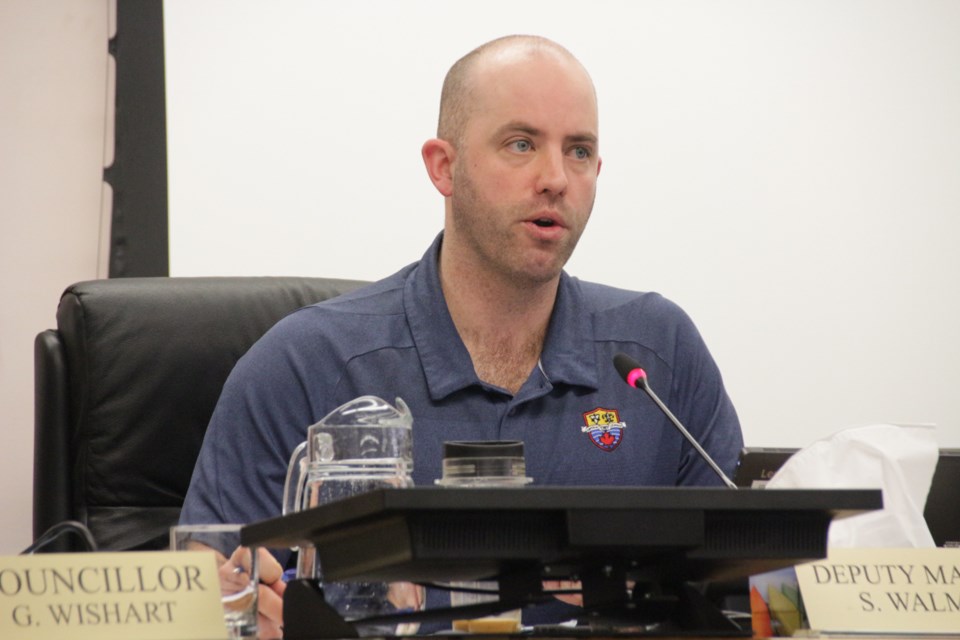Deputy Mayor Steffen Walma is happy to be the voice of his community --- not only on his local council but also on a more federal level.
The Tiny Township elected official, who joined the Federation of Canadian Municipalities (FCM) last June, shared with MidlandToday some of the matters he has been working on in his role with the advocacy group.
It's mostly around communicating the needs of rural municipalities to the federal government, especially in the time of COVID-19, said Walma.
The one "good news story" he's very proud to share is the win for farmers.
"The agricultural community is having a very hard time still to get things prepped for a growing seeing because a lot of them use migrant workers," said Walma. "With the pandemic, we undertook a lot of trials to push our unemployed residents and the farmers said they weren't getting the same yield. The workers they were getting weren't willing to stay on. And this is Canada-wide."
The government, said Walma, required all migrant workers to be quarantined for 14 days when coming to work in a farm.
"The issue was that the farmer would have to pay wages for them to quarantine," he said. "It was also pushing back the farming schedule."
Stakeholder groups brought the concerns forward and Walma said the FCM took them to Deputy Prime Minister Chrystia Freeland.
"At the beginning of April, the federal governement announced the migrant worker wage subsidy," said Walma. "That is a good news story."
Further, he said, the group has advocated to the federal government around considering customizing its pandemic messaging for rural communities.
"At the beginning of the pandemic, getting the needs of municipalities across to the federal governemnt was important," he said. "We got messages that all parks should be closed. If you look at the bigger cities, it made sense, because people use those parks differently in bigger cities than they do in rural areas.
"In a rural community like ours, there is room for people to socially distance," added Walma. "We pushed the idea that sometimes blanket statements don't work."
He said that way of messaging from the government has still not changed, as was exhibited in the messaging around seasonal residents to Tiny and other such municipalities.
The federal government, the province and all health units were asking people not to visit their cottages," said Walma, "but what we were advocating from a rural perspective. We presented the rationale about why we weren't ready."
He said the main concern is the extra pressure on local hospitals, which are not equipped to handle a sudden influx of seasonal residents.
"Hospitals are funded on your primary residents," said Walma. "You may pay taxes on your secondary home, but you don't actually contribute to the healthcare in that area."
He said the message to the federal government is that the lower-tier municipalities need to be given some teeth to enforce the restrictions being put in place by Ottawa.
"If you're sending out a recommendation, you have to give communities the ability to enforce or implement it in time," said Walma.
Moreover, he said, through the FCM, he has been working on projects to bring broadband internet to rural Canada.
Like other municipalities, Tiny Township is also getting ready to provide high-speed internet to its residents through the Southwestern Integrated Fibre Technology (SWIFT), a non profit municipally-led broadband expansion project created to improve internet connectivity in underserved communities and rural areas across Southwestern Ontario.
Walma said a simultaneous project is the low earth orbit (LEO) satellite technology.
"If you look at internet servers that use satellites, they use high-orbiting satellites, which are at a fixed point," he said. "However, they're so high up there's a latency aspect and you don't get the CRTC (Canadian Radio-television and Telecommunications Commission) mandated 50 Mbps."
With the LEO program, the satellites are 30 times closer than the previously used satellites, he said.
"They create higher download speeds, well beyond what anyone in this area is getting," Walma said. "The way it works is that they have to launch a whole bunch of these to create a constellation over a certain area. The federal government has teamed up with FCM and Telesat and by 2022, they're launching 150 satellites to service north of the 55th parallel. But in the next year, the remainder of the program launches and another 150 satellites will go up to serve the rest of Canada."
